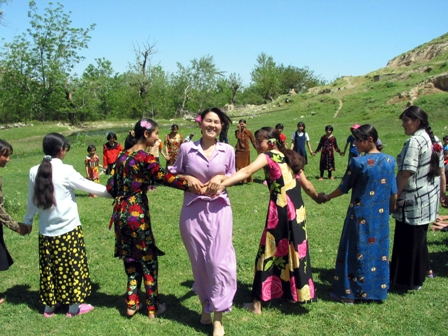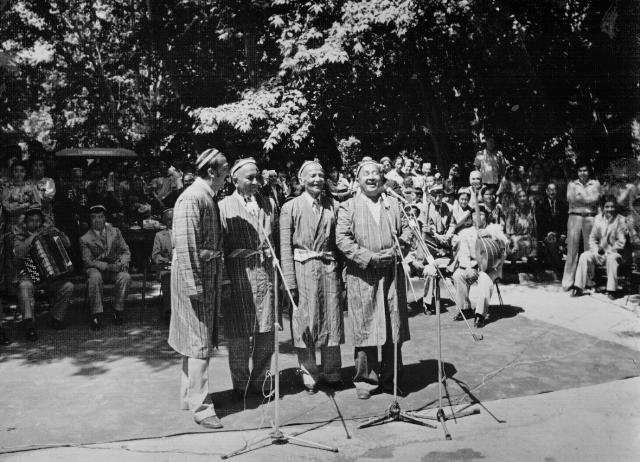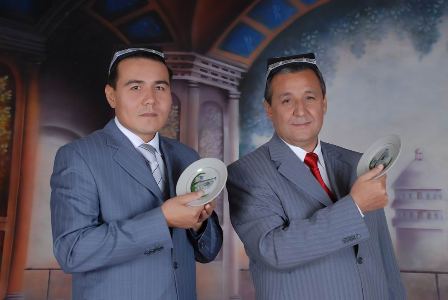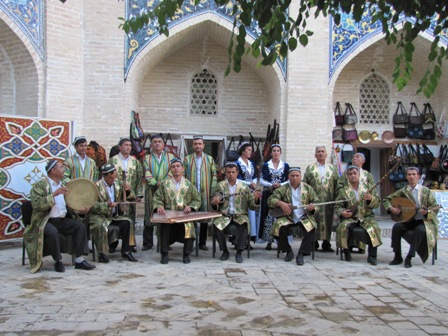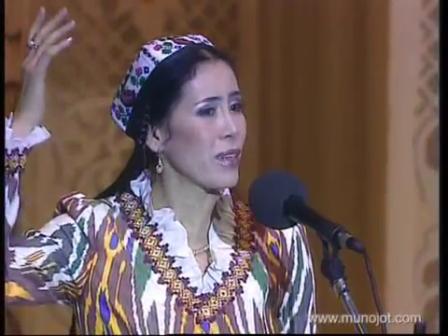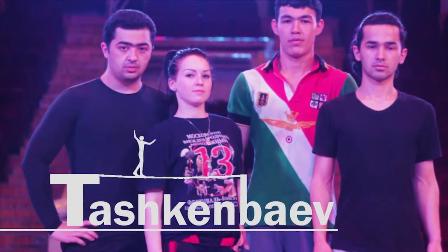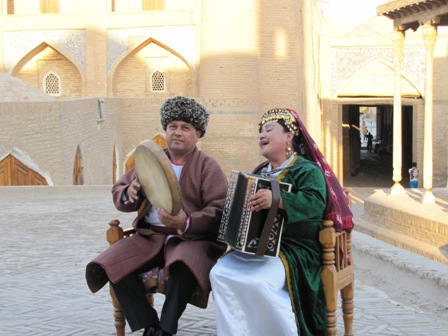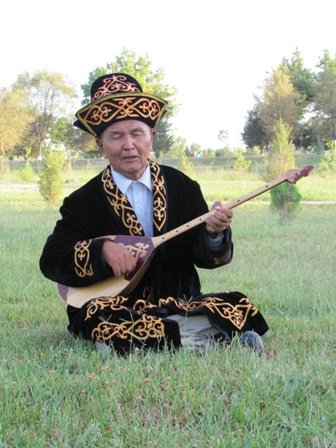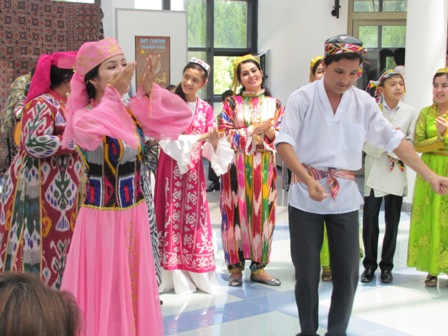ARTICLE: Oral Folklore of Uzbekistan by the Example of Narrative Art
The people inhabiting the present territory of Uzbekistan have their rich folklore like any nation on the earth. Dostons are special among the genres of folklore epics in terms of volume and variety of the means of expression.
Like other major genres of folk art, they arise on the basis of archaic folklore and ancient national history and incorporated both ancient cultural traditions and the memory of the formation of the people, their spiritual world and historical destinies, their civil, moral and aesthetic ideals.
Doston (from Persian داستان), means "story" it is epic folklore and literature of the Middle East and Southeast Asia. Dostons are either folklore or literary treatment of heroic myths, legends and fairy stories.
Uzbek national doston passed a long way of historical development. The epoch of ancient Turkic epic is almost the same era of the Saka and Massagetae. Epic works of Turkic folklore "Alpamish" could coexist with a crown full of epic works of those times "Tamaris" and "Shirak", "Siyavush", "Iskander", today there are only a small parts left from those epic works.
The folklorists usually define doston to several types:
- heroic epics ("Alpamysh", "Yadgar"), whose an epic flesh is closely related to the patriarchal-tribal relations, with life, manners Turkic tribes who in the distant past were nomadic or semi-nomadic life
- martial dostons ("Yusuf and Ahmed" "Alibek and Balibek");
- the heroic-romantic dostons ("Lonely Ahmed," cycle "Rustam" cycle "Gorogly");
- dostons of love-romentic nature ("Kuntugmysh") "Ravshan" Khorezm doston);
- social medium dostons ("Sahibkyran", "Arzigul", "Shirin and Shakar")
- book epics ("Farhad and Shirin", "Layla and Majnun", "Bahram and Gulandan", etc..).
They are also historical dostons, where themes, images and ideas are related to historical events and historical fiction dostons - "Tulumby" (XV c.) "Shaybanikhon" and "Aychinar" (XVI c.). There are described the fate of individuals who are historical, with the real events and facts, for example, the relationship between Shaybanikhon and Babur, Babur's campaign in Afghanistan, etc. However, the task of folklore authors clearly lay in "flourishing" history through fiction.
The repertoire of the leading Bakhshi have also include autobiographical dostons. ("Autobiography" Eragasha Dzhumanbulbul-oglu, "My Days" Fazil Yuldash, "Happy Generation" Nazar Islam oglu, "My days are" Abdulla oglu Nurali and others).
In the past, all the rulers had their own bakhshi. For example, Chenghis Khan had Ulugh Zhirchi bakhshi, Tuhtamish had Kamolzoda and Zhakhon Mirza bakhshi, Muhammad Rahimhon II (Khiva khan) had Riza Bakhshi, Nasrullo, emir of Bukhara had Ernazar Bakhshi. Courtiers bakhshi told not only traditional dostons, but also created works praising their rulers.
The folklorists defines the following bakhshi school in the territory of Uzbekistan:
- Bulungur school;
- Kurgan school;
- Shakhrisabz school;
- Kamay school;
- Sherabad school;
- Khoresm school;
- Karakalpak school.
The most famous representative of Bulungur school is Fozil Yuldosh ogli (1872-1955). He performed the following dostons: "Alpomish", "Yodgor", "Yusuf and Ahmad", "Zulfizar", "Malikai ayёr", "Nurali", "Murodhon", "Shirin and Shakar" and others. Mukhammad shoir who lived in the second half of the XVIII century was a teacher of Yoldosh bulbul (father of Fozil Yoldosh ogli). This school had bakhshi such as Chinni shoir, Rakhim bulbul, Zhora, Fozil shoir, Yorlaqab and others.
Ergash Jumanbulbul ogli (1868-1937) and Polkan shoir (1874-1941) are representatives of Kurgan school. They performed dostons: «Alpamish», «Yakka Ahmad», «Oysuluv», «Kuntugmish», «The birth of Gorogli», «Yunus pari», «Miskol pari», «Avazkhon», «Khasankhon» and others.
The bakhshies living in the south of Uzbekistan consider themselves the representatives of Sherabad school. The representatives of this school are Shernazar Beknazar ogli and his apprentices are Mardonkul Avliyokul ogli, Normurod bakhshi, Nurali Boymat ogli, Boriboy Ahmad ogli. Nowadays the representatives of this bakhshi school are safeguarding and contuning the traditions of this school.
The bakhshi performers can be classified according to the manner of performance and use of musical instuments. By using musical instruments:
- Karakalpak dutar (Karakalpakistan)
- Tor, accordion (bulaman) and doira (Khorazm)
- Qobuz (Karakalpakistan)
- Dombira ( all other regions).
The karakalpak performers of dostons are called baksi or jirov depending on their repertoire, using musical instruments and manner of performance. Baksi accompanies his performance with Karakalpak dutar, sings in traditional voice and performs exceptionally dostons of love-romantic nature. Jirov accompanies his performance with kobyz, sings with throaty voice and performs exceptionally heroic dostons.
The doston performers accompany their performance with dutar and bulaman in Kharezm region. Transcaucasian tar and russian accordion became very popular in the middle of the last century in Kharezm region. Nowadays, bakhshis of Kharezm region use tar, accordion and doira. They sing with traditional voice. Moreover, songs from dostons are very popular in Khorezm region in contrast to other regions and they are used almost everywhere.
The ancient traditions are preserved in all other regions of Uzbekistan, which means they use archaic musical instruments such as dombira and manner of throaty voice.
Dostons are not only oral performance. It should be sung and one need to perform in the way a theater of an actor. Thus the performance should be multifaceted talented. A bakhshi (performers of dostons) must know the texts of several dostons and have the following skills:
- play on folk instruments;
- interestingly narrating the text ;
- singer (often radically different from those of modern and traditional vocals);
- Interpreter (Bakhshi can narrate the same story in different ways);
- the poet (and composing poetry without preparation);
- actor and ect.
Most often poetic part of dostons is the main text of the performance in the form of seven-eight syllabus or hendecasyllable poems. In addition to poems "saj" rhythmic or rhymed prose is used in dostons.
Bakhshi usually begins his speech with the attitude if an instrument and playing short tunes and usually asking "What to sing?" in other regions, except Khorezm. Often this question is asked in a singing performance, and only then bakhshi starts performing. The full performance of doston takes a lot of time and thus bakhshi needs to have a rest he stops and holds tradition «дўмбира тўнтармоқ» (flip dombira). Then bakhshi flips his dombira and reads a poem:
Сени уйдан олиб чиқдим буктириб,
Сен юрибсан улфатингни ахтариб,
Мен қўяйин сени энди тўнтариб,
Ярим кеча ҳадди бўлди, жонивор.
(The meaning: I took you from the house, and you are looking for your friend. Now I will flip you, because it is too late now)
Йиғиб опсан улфатингни жамини,
Эганг олсин-да бир оз дамини.
Дамин олиб айтиб берар камини,
Рўмол ёзар вақти бўлди, жонивор.
(The meaning: you have gathered all your friends, now I need to have a rest. After the rest I will narrate the rest, now it is time to spread belbog (the material which is used by men to cover their belly))
Then bakhshi takes off his belbog, chapan and goes out. At this point, some of those participants spreads belbog in the middle of the room and anyone in the room leaves free money as a reward for excellent performance.
However, in Khoresm region bakhshi performs a melody «Тўйингда қайтсин» (Let all return on your wedding). And at this point the listeners reward and thank bakhshi financially.
Folklore expeditions have a great value of safeguarding and protection of dostons. The huge amounts of dostons were recorded during the expedition organized by the Museum of Literature named after Alisher Navai and faculty of philology of Karshi State Pedagogical Institute in 1969. The expedition was lead by folklorist M.Muradov and A.Kahharov.
Members of the expedition of more than thirty-Bakhshi poets who are Kadir Bakhshi Rakhimov, Yusuf Utagan-oglu, Tangier Safarov Enchantment Kiyomi-oglu Mamarayim youzbashi, Tashmurada Tour-ogli, Eshmurada Sherdan-oglu Normurod Poyon-oglu Khushvaktov Mardanakulova, Eshkobila Sash-ogly, Gayima bakhshi, Hayitnazara Alisayd-oglu, Cora and Chora Umirova, Hazratnula bakhshi, Rajab Normurod-oglu Khushvaktov Satarova, Kuzya Ruzieva recorded more than a dozen original, not previously recorded folk dostons.
Great attention is paid to the safeguarding and protection of dostons under the conditions of Independence. There is "National Bakhshi of Uzbekistan" award and very famous representatives of narrative art are awarded. Moreover, the most talented young doston performer are awarded with "Nikhol" award.
The department of folklore where taught the skills of playing on musical instruments and singing excerpts from dostons in many musical and art schools of Khorezm, Karakalpakstan, Surhandarya. Adoption of the State Programme of protection, safeguarding and use of the Intangible Cultural Heritage opens up new horizons in the safeguarding of all kinds of folk art. The State Program supports the publication of the masterpieces of Uzbek folklore. The largest part of this edition must consist of dostons.
Author: Urazali Tashmatov, Professor at Uzbek State Institute of Arts and Culture







